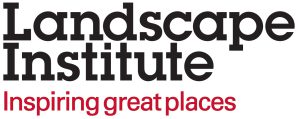After studying the history of the site and the planned decommissioning process, the design research project imagines a speculative future ‘The Myth of Dounereay’ and investigates socio-economic issues at the regional scale, such as the impact of radioactive coastal contamination, bioremediation techniques and landscape regeneration.
Submitted by Yiyu Zhu of
ESALA
Intervene Within Dounreay is a is a hypothetical graduate student project developed by Yiyu Zhu in 2019 as part of the Master of Landscape Architecture design studio Actants & Assemblages of Scotland’s North Coast Landscapes. The studio was led by Anaïs Chanon and Elinor Scarth at Edinburgh School of Architecture and Landscape Architecture at ECA. The projects undertaken as part of this studio explored a wide range of contemporary landscape architecture questions, for example, examining Scottish coastal landscapes in terms of shifting coastal conditions, investigating conservation challenges, climate change impact and anticipating socio-environmental transition.
Yiyu project work focused upon the former site of Dounreay nuclear power station near Thurso. After studying the history of the site and the planned decommissioning process, the design research project imagines a speculative future ‘The Myth of Dounereay’ and investigates socio-economic issues at the regional scale, such as the impact of radioactive coastal contamination, bioremediation techniques and landscape regeneration. The project conceives a central transect perpendicular to the coast and speculated upon the power of landscape restoration through time. The ‘Unrestricted Use Of Site’ proposals are framed through four stages as part of a time-based strategy. At stage one and two, it is imagined that public can observe the process of decommissioning from outwith the restricted areas. Landforms are created to provide suitable conditions for microorganisms to degrade the radioactive particles present in the soil and groundwater. At stage three, the site could partially open to the public. Meanwhile, the coastal area continues under the bioremediation process. At stage four, vibrant life forms start to “take hold” of the reworked landscape. Birds, plants, marine species will ecologically ‘occupy’, and then transcend the current ‘boundary’ of the designated site. The proposed landforms protect the site from flooding in consideration of climate change.
View all Year of Coasts and Waters case studies
here
Make sure to keep up with our posts on
Twitter and
Facebook under the hashtag
#LIS_YCW as well as following the main Year of Coasts and Waters hashtag at
#YCW2021








